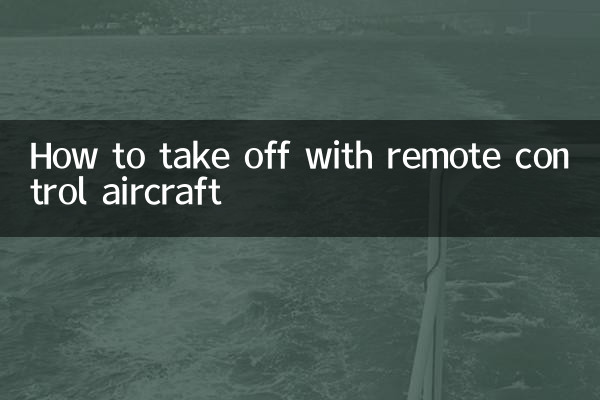How to take off from remote-controlled aircraft: Popular topics and operation guides on the entire network
With the development of technology, remote-controlled aircraft (drone) has become a popular entertainment and photography tool. This article will combine popular topics across the network for nearly 10 days to provide you with a guide to takeoff of remote-controlled aircraft, and attach structured data on related hot topics.
1. Basic steps for taking off from a remotely controlled aircraft

1.Check the equipment: Ensure that the remote control, battery, propeller and other components are intact and the power is sufficient.
2.Choose a venue: Open and unobstructed flat ground, away from crowds and obstacles.
3.Power-on calibration: Start the remote control and the aircraft, perform compass and gyroscope calibration.
4.Takeoff operation: Slowly push the throttle lever and maintain a stable altitude after the plane leaves the ground.
5.Flight Control: Control direction, speed and altitude through the remote control.
2. Hot topics and hot content on the entire network in the past 10 days
| Hot Topics | Popularity index | Main discussion content |
|---|---|---|
| Drone aerial photography skills | 85 | How to shoot stable pictures, composition skills, and post-processing |
| Remote-controlled aircraft safety regulations | 78 | No-flying area, flight altitude restrictions, registration requirements |
| Getting Started Guide for Beginners | 92 | Model selection, basic operation, FAQ |
| Drone technology innovation | 65 | Automatic obstacle avoidance, long battery life, folding design |
| Remote control aircraft entertainment application | 70 | Racing competitions, light show performances, parent-child interactions |
3. Frequently Asked Questions and Solutions for Takeoff
| question | Possible Causes | Solution |
|---|---|---|
| Can't take off | Insufficient power, wrong propeller installation | Check the battery, reinstall the propeller |
| Unstable after takeoff | Calibration not completed, strong air interference | Recalibrate, select windless weather |
| Remote control signal loss | Too far away, signal interference | Maintain visible distance and avoid interference sources |
4. Recommended models of popular remote control aircraft
| model | Features | Suitable for the crowd |
|---|---|---|
| DJI Mini 3 Pro | Lightweight and portable, 4K image quality | Travel photography enthusiasts |
| Holy Stone HS720 | High cost performance, GPS positioning | beginner |
| Autel Evo Lite+ | Long battery life, 6K camera | Professional aerial photographer |
5. Precautions for safe flight
1. Comply with local regulations and avoid operating in no-fly areas.
2. Check the weather before flight to avoid rain, snow and strong winds.
3. Keep the aircraft within sight and pay attention to the battery level.
4. Respect others' privacy and avoid shooting sensitive areas.
5. Purchase third-party liability insurance to prevent accidental risks.
Conclusion
The take-off operation of a remote-controlled aircraft seems simple, but it requires mastering the correct methods and safety knowledge. Through this article's guide and hot data analysis, I hope it can help you enjoy the fun of flying safely and smoothly. Whether it is aerial photography creation or entertainment, following the rules and continuing practice are the key to becoming an excellent pilot.
(The full text is about 850 words in total)

check the details

check the details